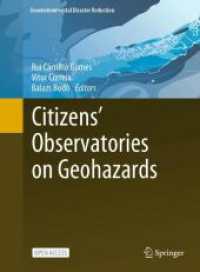- ホーム
- > 洋書
- > ドイツ書
- > Mathematics, Sciences & Technology
- > Chemistry
- > physical chemistry
Full Description
This book provides a comprehensive overview of the latest applications of laser-induced breakdown spectroscopy (LIBS) in the environmental and forensic sciences along with chemometric methods.








